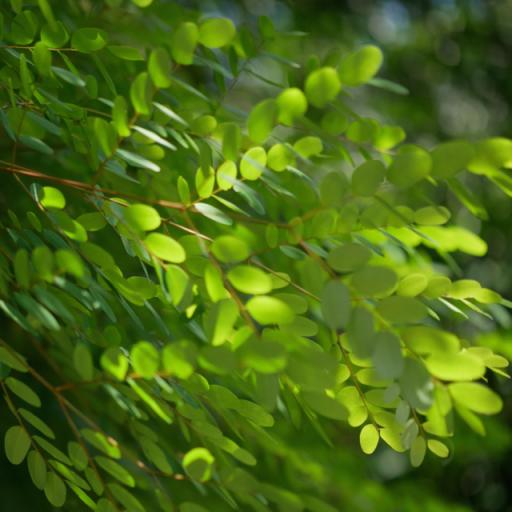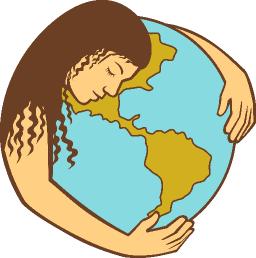
Stats
Work interests: research, editing, science communication
Affiliation/website: National Museum of Ethnology, Osaka
Preferred contact method: Any
Preferred contact language(s): English, German
Contact: email = researchcooperative-at-gmail-dot-com
Favourite publications: Various, and especially the open access versions of older journals with effective review systems
Founding Member
Affiliations: 1996-present: National Museum of Ethnology, Osaka. 1995: Freelance editor, Kyoto. 1994: JSPS Research Visitor, Kyoto University, Kyoto. 1993: Research Visitor, Australian National University, Canberra. 1991: Visiting Researcher, National Museum of Ethnology, Osaka.1990: STA Fellow, National Institute for Ornamental Plants, Vegetables, and Tea (NIVOT), Ano, Japan
Contact: National Museum of Ethnology, Senri Expo Park, Suita City, Osaka, Japan 565-8511
Biographical: Established the Research Cooperative in 2001
Favourite Publications: Various
I’m thrilled to bring your attention to a significant milestone of our project and an excellent opportunity for the citizen science community. Please save the date because on 10 January 2023, at 12:00 noon CET we will launch the 1st IMPETUS Open Call!
All the details, FAQ, forms and application information will be available on 10 January at 12:00 noon CET on www.impetus4cs.eu/opencall .
We will need you to spread the word among your communities and networks! In the meantime, you can visit https://impetus4cs.eu/savethedate/ and pencil in the date!
--
Journals and magazines that cover "science communication" in all its diversity may be of interest to many members of our network. When I come across such publications, I would like to list them here.
Journal of Science Communication (JComm) (Sissa Medialab)
Science Communication: Linking Theory and Practice (Sage Publishing)
SWIPE SciComm (Animate Your Science)
SWIPE SciComm has been announced as "the world's first science communication magazine" (as an online publication at least). Here is a slightly edited version of the original posting to the PCST listserver:
https://mobimag.co/swipescicomm/i1/1 ...
My team and I realised there was not a single science communication magazine out there, so we decided to create one!
Since it's 2022, and we don't like to cut down trees for paper or burn fuel to ship it, we made it mobile first. It's a new kind of magazine that you can read on your phone without downloading any apps simply by swiping and scrolling.
You have to try it, it's easy and addictive!
In this issue you'll find:
- An interview with scientist turned film-maker Dr Randy Olson (his books are compulsory reading here at AYS!)
- A climate communications-focused piece by Dr Simon Torok , founder and co-director of Scientell.
- A fantastic tutorial on how to easily create 3D art with Adobe Illustrator by Dr Khatora Opperman
- And much much more.
Oh and before I forget, the magazine is FREE and always will be. Now click below and SWIPE for SciComm!
Applications invited for UK Science Communication course (Jan-March 2023)
By Research Cooperative, 2022-09-01
[Cross-posted by Admin from PCST Network]
Science Communication: Connecting People, Creating Events
The Science Communication Unit at UWE Bristol is delighted to once again invite applications for this popular part-time, online course, which will run from 16 th January to 24 th March 2023.
You will develop the practical skills and theoretical understanding needed for effective, science-based public engagement, from the team behind UWE Bristol's highly regarded Science Communication postgraduate programmes . Topics include event design; understanding audiences; project planning; presentation skills; event promotion and evaluation.
The course is designed to work flexibly alongside other commitments, with assignments that can be tailored to a current role or used to explore new possibilities. The e ight units are taught over ten weeks (including two private-study weeks), with approximately ten hours study time each week.
You are required to have a minimum degree level qualification (or equivalent), though this does not need to be in a science-based subject. On completion you will gain 30 Masters-level credits (UK) or 7.5 ECTS (EU). Course fees are £750.
To apply, and for further course information , please visit: https://courses.uwe.ac.uk/usskns15m/science-communication-connecting-people-creating-events or contact us on science.communication@uwe.ac.uk .
Science Communication Unit
Faculty of Health and Applied Sciences
Department of Applied Sciences
Coldharbour Lane
University of the West of England
Bristol BS16 1QY
United Kingdom
t: 01173283919
e: science.communication@uwe.ac.uk
w: www1.uwe.ac.uk/research/sciencecommunicationunit.aspx
James Lovelock, creator of the "Gaia hypothesis", has died at 103
By Research Cooperative, 2022-07-30
It is hard to imagine that James Lovelock, of all people, has passed away at the age of 103 (26th July 2022). He seemed to be eternal. Yet I doubt that he had any problem with the idea of his own mortality, despite his refusal to retire, and all his efforts to extend life on Earth. From reading about his ideas and his role in science history, he appears to have been an optimist, pessimist, idealist and realist all in one.

Helena Horton, writing for the Guardian on 27th July 2022, provides an informative short obituary, and notes:
"His Gaia hypothesis posits that life on Earth is a self-regulating community of organisms interacting with each other and their surroundings."
She then quotes Jonathan Watts (global environment editor at the Guardian). Watts knew Lovelock well and is writing a biography. The following statements are from Watts:
“Without Lovelock, environmental movements across the globe would have started later and taken a very different path.
In the 1960s his ultrasensitive electron capture detector revealed for the first time how toxic chemicals were creeping into the air we breathe, the water we drink and the soil where we grow our food.
He was the first to confirm the presence of fluorocarbons in the stratosphere and issued one of the earliest warnings that petroleum products were destabilising the climate and damaging the brains of children.
He also warned, in clearer terms than any of his peers, of the dangers humanity posed to the extraordinary web of relations that make Earth uniquely alive in our universe.”

A long Wikipedia article dives deeper into various scientific controversies that Lovelock helped to energise.
His own views changed over time, doubtless because he lived long enough to see whether actual trends matched his own predictions.
Lovelock was conscious of having been alarmist in his popular writings, but remained alarmed. Current climate trends, and an ever-expanding range of empirical observations (in the physical, biological and agricultural sciences) give us every reason to be alarmed.
Panic will not be helpful: we need to be clear-thinking and alert to opportunities for positive action.
(Images: Gaia & Melting Ice, Vectorstock, 2022)
Is the staggeringly profitable business of scientific publishing bad for science?
By Research Cooperative, 2022-06-29
Stephen Buryani, writing in The Guardian (full report) (Tue 27 Jun 2017 06.00 BST), asks: " Is the staggeringly profitable business of scientific publishing bad for science?"
His report is an extended expose of profiteering by the private corporations that control scientific publishing, yet the answer is ambiguous. The silent question raised is: "What would have happened if private companies had not led expansion and innovation in scientific publishing, over the last 100 years?"
The following quotations are from near the beginning of this brilliant, surprising, and enlightening report. I strongly urge all members of our network to read the original if they can.
Quotes, courtesy of Guardian News & Media Ltd:
"In 2010, Elsevier’s scientific publishing arm reported profits of £724m on just over £2bn in revenue. It was a 36% margin – higher than Apple, Google, or Amazon posted that year."
"...scientific publishers manage to duck most of the actual costs. Scientists create work under their own direction – funded largely by governments – and give it to publishers for free; the publisher pays scientific editors who judge whether the work is worth publishing and check its grammar, but the bulk of the editorial burden – checking the scientific validity and evaluating the experiments, a process known as peer review – is done by working scientists on a volunteer basis. The publishers then sell the product back to government-funded institutional and university libraries, to be read by scientists – who, in a collective sense, created the product in the first place."
"A 2005 Deutsche Bank report referred to it as a “bizarre” “triple-pay” system, in which “the state funds most research, pays the salaries of most of those checking the quality of research, and then buys most of the published product”."
"Even scientists who are fighting for reform are often not aware of the roots of the system: how, in the boom years after the second world war, entrepreneurs built fortunes by taking publishing out of the hands of scientists and expanding the business on a previously unimaginable scale."
[Note: 223 words are quoted here. Under the terms of an Open License , the Guardian permits up to 500 words to be quoted with attribution, in blogs such as this. Sincere thanks to Guardian News & Media for these generous terms! (PJM)]
Enjoyed reading:
Michael Wood (1996) The Smile of the Murugan: A South Indian Journal. Penguin Books: London, pp. 247.
Non-fiction. I found this book being given away by a recently-retired, museum staff member who has been clearing out his office. As a specialist on Indian culture, he had many good books about India. This was an excellent account of journeys taken by a former BBC journalist and film-maker over many years. It has many dimensions, as travelogue, as ethnography, and as remembrance of a long friendship with one family in Chidambaram, a small city in Tamil Nadu state. I enjoyed his attention to the sweaty details of landscape, climate, physical decay, biological regeneration, and the living conditions endured and enjoyed by people he lived and traveled with. The book is also about religion, human spirit, our attachments to history and tradition, and the allure of modernity.
John Berendt (2006) The City of Falling Angels. Penguin Books: London, 420 pp.
Non-fiction. A wonderful social history of modern Venice, based on the author's experiences and investigations in the city over many years. The author made patient efforts to meet many different kinds of people, and gain diverse perspectives on many aspects of city life and history. I admire his ability to follow many threads of study and bring them all together. Despite taking up some (locally) very controversial topics, he is able to state at the beginning: "All the people in [this book] are real, and are identified by their real names. There are no composite characters".
Geerat Vermeij (1997) Privileged Hands: A Remarkable Scientific Life. W. H. Freeman and Company: New York.
Non-fiction. The author is a biologist who became blind in childhood, in the Netherlands. After migrating to the USA with his family, at a young age, he became fascinated with seashells, ecology, palaeobiology, and the evolution of molluscs. His vivid descriptions of field work in many different countries transported me far from Kyoto at a time when travel for my own fieldwork has been greatly limited. I enjoyed this beautifully written book as much for the author's personal story as for the broad view of 20th century biology and evolutionary theory.
There are many good expatriate writers in Japan.
Some are doing work unrelated to Japan in particular, others have chosen life in Japan as their main focus.
A good example of the latter is the "Cultivated Days" blog, here:
https://cultivateddays.co/blog/
C. W. Nicol (1940-2020) was a pioneer of nature writing in Japan, and became dedicated to ecological education here, establishing an organisation that carries on his work: Afan Forest Trust.
See: https://afan.or.jp/
The site is entirely in Japanese, but Nicol published many articles in English in The Japan Times and elsewhere.











